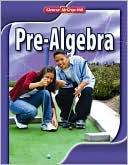
Concept explainers
a.
To calculate: The mean of deepest points of the Great Lakes.
a.
Answer to Problem 47PPS
The mean of deepest points of the Great Lakes is −244.8 .
Explanation of Solution
Given information:
The table that shows the deepest point of Great Lakes.
Great LakeDeepestPoint(m)Erie−64Huron−229Michigan−281Ontario−244Superior−406
Formula used:
Mean of n numbers is calculated as sum of n terms divided by number of terms.
Calculation:
Consider the given table,
Great LakeDeepestPoint(m)Erie−64Huron−229Michigan−281Ontario−244Superior−406
Recall that mean of n numbers is calculated as sum of n terms divided by number of terms.
Apply it,
Mean=−64+(−229)+(−281)+(−244)+(−406)5=−12245=−244.8
Thus, mean of the deepest points of Great lakes is −244.8 .
b.
To calculate: The new mean if each of the deepest points were 10 meters higher and compare it with mean calculated in part (a).
b.
Answer to Problem 47PPS
The new mean of the deepest points of Great lakes is −234.8 and −234.8>−244.8 .
Explanation of Solution
Given information:
The table that shows the deepest point of Great Lakes.
Great LakeDeepestPoint(m)Erie−64Huron−229Michigan−281Ontario−244Superior−406
Formula used:
Mean of n numbers is calculated as sum of n terms divided by number of terms.
Calculation:
Consider the given table,
Great LakeDeepestPoint(m)Erie−64Huron−229Michigan−281Ontario−244Superior−406
Since, each of the deepest points have to be higher by 10 points, so, new deepest points will be calculated as,
Great LakeDeepestPoint(m)Erie−64+10=−54Huron−229+10=−219Michigan−281+10=−271Ontario−244+10=−234Superior−406+10=−396
Recall that mean of n numbers is calculated as sum of n terms divided by number of terms.
So, the new mean will be calculated as,
Mean=−54+(−219)+(−271)+(−234)+(−396)5=−11745=−234.8
Since, −234.8 is greater than −244.8 , so, new mean is greater than previous one −234.8>−244.8 .
Thus, new mean of the deepest points of Great lakes is −234.8 and −234.8>−244.8 .
Chapter 2 Solutions
Pre-Algebra, Student Edition
Additional Math Textbook Solutions
Introductory Statistics
A First Course in Probability (10th Edition)
Thinking Mathematically (6th Edition)
Algebra and Trigonometry (6th Edition)
A Problem Solving Approach To Mathematics For Elementary School Teachers (13th Edition)
Elementary Statistics: Picturing the World (7th Edition)
- Practice k Help ises A 96 Anewer The probability that you get a sum of at least 10 is Determine the number of ways that the specified event can occur when two number cubes are rolled. 1. Getting a sum of 9 or 10 3. Getting a sum less than 5 2. Getting a sum of 6 or 7 4. Getting a sum that is odd Tell whether you would use the addition principle or the multiplication principle to determine the total number of possible outcomes for the situation described. 5. Rolling three number cubes 6. Getting a sum of 10 or 12 after rolling three number cubes A set of playing cards contains four groups of cards designated by color (black, red, yellow, and green) with cards numbered from 1 to 14 in each group. Determine the number of ways that the specified event can occur when a card is drawn from the set. 7. Drawing a 13 or 14 9. Drawing a number less than 4 8. Drawing a yellow or green card 10. Drawing a black, red, or green car The spinner is divided into equal parts. Find the specified…arrow_forwardAnswer the questionsarrow_forwardHow can I prepare for me Unit 3 test in algebra 1? I am in 9th grade.arrow_forward
- Asked this question and got a wrong answer previously: Third, show that v3 = (−√3, −3, 3)⊤ is an eigenvector of M3 . Also here find the correspondingeigenvalue λ3 . Just from looking at M3 and its components, can you say something about the remaining twoeigenvalues? If so, what would you say?arrow_forwardDetermine whether the inverse of f(x)=x^4+2 is a function. Then, find the inverse.arrow_forwardThe 173 acellus.com StudentFunctions inter ooks 24-25/08 R Mastery Connect ac ?ClassiD-952638111# Introduction - Surface Area of Composite Figures 3 cm 3 cm 8 cm 8 cm Find the surface area of the composite figure. 2 SA = [?] cm² 7 cm REMEMBER! Exclude areas where complex shapes touch. 7 cm 12 cm 10 cm might ©2003-2025 International Academy of Science. All Rights Reserved. Enterarrow_forward
- You are given a plane Π in R3 defined by two vectors, p1 and p2, and a subspace W in R3 spanned by twovectors, w1 and w2. Your task is to project the plane Π onto the subspace W.First, answer the question of what the projection matrix is that projects onto the subspace W and how toapply it to find the desired projection. Second, approach the task in a different way by using the Gram-Schmidtmethod to find an orthonormal basis for subspace W, before then using the resulting basis vectors for theprojection. Last, compare the results obtained from both methodsarrow_forwardPlane II is spanned by the vectors: - (2) · P² - (4) P1=2 P21 3 Subspace W is spanned by the vectors: 2 W1 - (9) · 1 W2 1 = (³)arrow_forwardshow that v3 = (−√3, −3, 3)⊤ is an eigenvector of M3 . Also here find the correspondingeigenvalue λ3 . Just from looking at M3 and its components, can you say something about the remaining twoeigenvalues? If so, what would you say? find v42 so that v4 = ( 2/5, v42, 1)⊤ is an eigenvector of M4 with corresp. eigenvalue λ4 = 45arrow_forward
 Algebra and Trigonometry (6th Edition)AlgebraISBN:9780134463216Author:Robert F. BlitzerPublisher:PEARSON
Algebra and Trigonometry (6th Edition)AlgebraISBN:9780134463216Author:Robert F. BlitzerPublisher:PEARSON Contemporary Abstract AlgebraAlgebraISBN:9781305657960Author:Joseph GallianPublisher:Cengage Learning
Contemporary Abstract AlgebraAlgebraISBN:9781305657960Author:Joseph GallianPublisher:Cengage Learning Linear Algebra: A Modern IntroductionAlgebraISBN:9781285463247Author:David PoolePublisher:Cengage Learning
Linear Algebra: A Modern IntroductionAlgebraISBN:9781285463247Author:David PoolePublisher:Cengage Learning Algebra And Trigonometry (11th Edition)AlgebraISBN:9780135163078Author:Michael SullivanPublisher:PEARSON
Algebra And Trigonometry (11th Edition)AlgebraISBN:9780135163078Author:Michael SullivanPublisher:PEARSON Introduction to Linear Algebra, Fifth EditionAlgebraISBN:9780980232776Author:Gilbert StrangPublisher:Wellesley-Cambridge Press
Introduction to Linear Algebra, Fifth EditionAlgebraISBN:9780980232776Author:Gilbert StrangPublisher:Wellesley-Cambridge Press College Algebra (Collegiate Math)AlgebraISBN:9780077836344Author:Julie Miller, Donna GerkenPublisher:McGraw-Hill Education
College Algebra (Collegiate Math)AlgebraISBN:9780077836344Author:Julie Miller, Donna GerkenPublisher:McGraw-Hill Education





